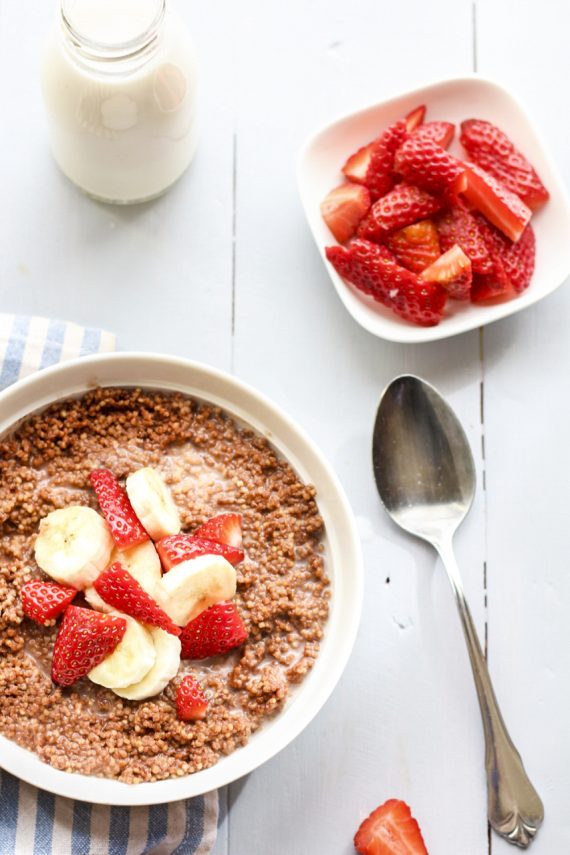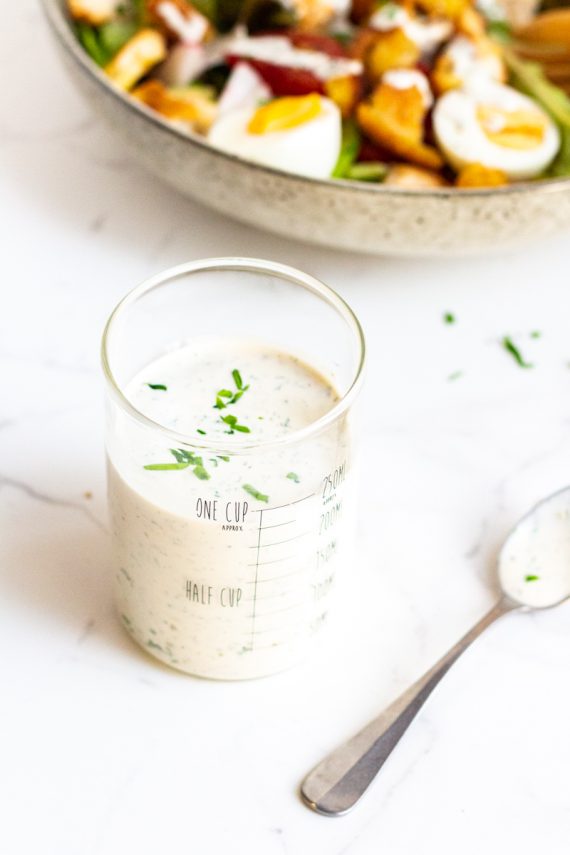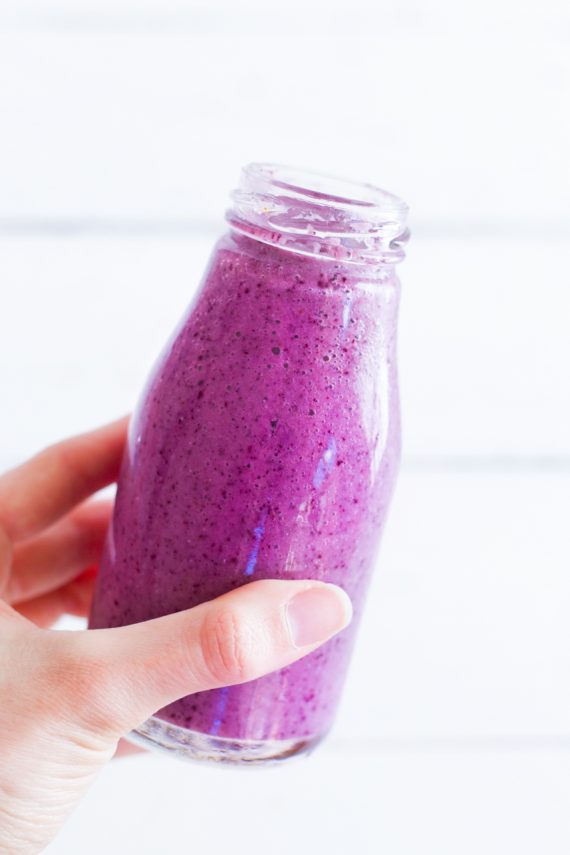Inulin is a sneaky FODMAP as it likes to hide in processed foods! Before we learn where inulin hides, let’s figure out what it is.
What is Inulin And Is It A FODMAP?
Inulins are a type of polysaccharide that is found inside many types of plants and they use it to store energy (1). Inulins also belong to a type of dietary fibres known as fructans (1 2 3). Fructans are part of the oligosaccharides group in the FODMAP acronym and can cause serious digestive distress for some people with irritable bowel syndrome (IBS) (2 3). This is because inulin is not absorbed in our small intestine, which means when it reaches the large intestine it is feasted on by our gut bacteria and this fermentation can cause bloating, abdominal pain, wind, and diarrhoea (2 3).
Why is inulin consumption recommended?
You may be wondering why inulin consumption is recommended if it causes so many pesky issues. Well for normal people without GI issues, inulin acts as a functional food and can be beneficial for their bodies (1 3 4). Research shows that inulin can have a prebiotic effect on the gut bacteria (1). Prebiotics are foods or substances that help encourage the growth of healthy bacteria in our guts (5). Inulin as a prebiotic is believed to help with:
- increasing the amount of calcium and minerals being absorbed from foods
- supporting a healthy immune system
- relieving and reducing intestinal problems (providing it doesn’t cause a FODMAP reaction)
Inulin can also decrease constipation by increasing the amount of fibre you consume. The fibre helps by increasing the volume and water content of your stools, making them easier to pass (1).
Where is inulin found?
Inulin is naturally found in a variety of fruit, vegetables, and grains such as chicory root, globe and Jerusalem artichokes, wheat, barley, onion, leeks, garlic, dandelion root, and bananas (1 6 7). Unripe common bananas are low FODMAP as the fructan levels are low enough not to cause digestive distress, however as the bananas ripen the fructan levels increase to a high FODMAP level (2).
What processed food is inulin added into?
Inulin has a neutral taste which means it can be used to replace sugar, fat, flour or fibre in processed foods without changing the flavour (6). Most commercially used inulin is extracted from chicory root (6). Inulin is often added to dairy products, yoghurts, frozen desserts, dietetic products, and meal replacers, table spreads, baked goods or bread, breakfast cereals, tablets and supplements, protein powders, and many other products (6). I have personally found it in rice crackers, gluten free bread, and mixed in with stevia (a natural sugar replacer).
Are you ready to take control of your gut symptoms?
No thanks, my gut is perfect.
Article continues below
What can inulin be called in food labels?
You need to check product labels for inulin, chicory root, chicory root extract, and chicory root fibre, to make sure it doesn’t sneak into your low FODMAP diet through processed foods. Also be aware that inulin can also be labelled as dietary fibre in some countries (8 9).
If you are on the low FODMAP diet how should you deal with inulin?
While on the first phase of the low FODMAP diet it is recommended that you reduce the amount of fructans (including inulin) that you consume (2 3). Avoid foods that contain high levels of naturally occurring inulin, and try to avoid products with added inulin (2 3). After the first phase of the low FODMAP diet you can test your tolerance to fructans and see if you can add them back into your diet.
Photo image: African Studio/Shutterstock.com











I just read an article (https://www.esha.com/dietary-fiber-nutrition-facts-label/) that states there has been an update to our labeling (US) so that inulin no longer has to be counted as part of dietary fiber. That will make it even more difficult to determine where inulin hides. I am just starting a 6-week Low FODMAP diet to try to straighten out my gut after being severely ill for 3 months and basically I just have to assume if it isn’t fresh it has inulins – and I do mean fresh. If I buy anything, I have to assume it contains inulins – unstated. How sad for those of us trying to find a way to get well – but if we stay as fresh as possible I guess it is better for us in the long run anyway as long as we can afford it. Amazing how much it costs to buy everything fresh (produce, meat, bones for broth, dried beans, etc.) to try to avoid as much inulin as possible. Healthier – but expensive. I realize it doesn’t say to completely avoid inulins on a low FODMAP diet but my copy says to try to limit inulins as much as possible and as ill as I have been – I am willing to try anything at this point.
Hi Yvonne,
We would interpret the article you’ve read a little bit differently. What the article is talking about is the nutrition panel or nutrition facts panel, not the ingredient list. Inulin also called chicory root, chicory root extract, and chicory root fibre will still need to be listed in the ingredient list in the product. Make sure you check the ingredient list as this will help you identify if a processed product has inluin in it or not. Also if you are in the first phase of the low FODMAP diet be really careful with dried beans as most of these are high FODMAP. I hope that helps!
Hi there, love your website it’s such a great resource!
I’d love to know what the acceptable serving size of inulin would be to keep it low fodmap? I’ve found a great protein powder that with the exception of inulin, fits the bill.
It’s got a serving size of 0.8g inulin.
Yay or nay?
Hi James,
Thanks for commenting! Unfortunately, we don’t have any FODMAP serving size information on inulin as an ingredient by itself. This means if you are in the first phase of the low FODMAP diet we would recommend avoiding that protein powder for a few weeks and then testing your tolerance levels to it.
I meant for good reasons, not food reasons, lol.
In so many products I read “dietary fiber” without listing chicory root or other sources that I don’t know if Is ok to try it or not.
Is Agave Inulin, not recommended for people with IB symptoms? I found this ingredientes in a Prebiotic blend.
Hi Magali,
Thanks for commenting. Inulin can be labelled as ‘dietary fibre’ in ingredient lists in some countries. If you are unsure then we’d recommend contacting the company and asking what they are using for dietary fibre. Agave inulin is considered high FODMAP so if you are in the first phase of the low FODMAP diet then we’d recommend you avoid it. Once you’ve tested your tolerance levels to fructans you can decide if you want to try products using this ingredient. We hope that helps.
Hi, I bought Tetley cold infusion tea bags that contain chicory root on the ingredients list. Would I react to it even if I just drink the infusion vs eating the root?
Hi Kathy,
Thanks for commenting. We’d still consider that tea high FODMAP. FODMAPs leach into liquid so as you infuse the water with the tea some of the FODMAP content will transfer across into the drink. This means we’d suggest you avoid the Tetley cold infusion tea bags until after the reintroduction phase – then you can test your tolerance to them.
Hi I’m confused as I’ve read green banana flour is low FODMAP but that it does contain inulin. What amounts of banana flour are safe to eat please
Hi Janet,
Thanks for commenting. Green banana flour has been tested for FODMAPs by Monash University, the leading research center for the low FODMAP diet. It’s considered low FODMAP in 100g (3/4 cup serving). You can find more information about the flour in the Monash University FODMAP Diet App.